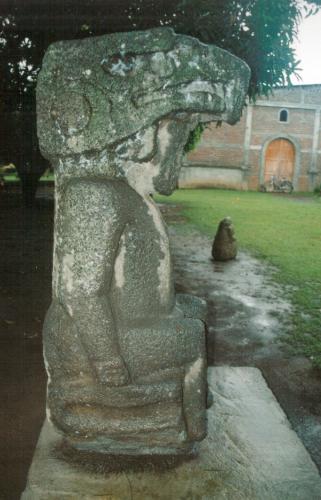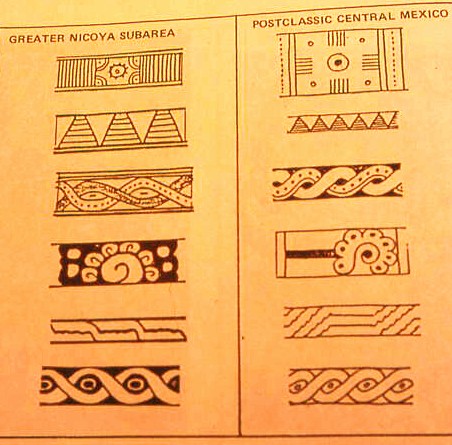Archaeological Background
Archaeology has a long history in Nicaragua, with Ephraim Squier among the early scholars to bring Nicaraguan antiquites to popular attention. While touring Nicaragua as an envoy of the US government, he collected information about local culture as well as archaeological sites. For example, he exposed the monolithic sculptures of Zapatera Island, many of which are now located in the museum in Granada.

Stone sculpture from Alta Gracia, Ometepe Island
Samuel Lothrop advanced archaeological knowledge of Nicaragua in the early 20th century through his research which culminated with a two-volume study of prehispanic ceramics. He integrated the historical sources for Mesoamerican migration to advance the idea of Postclassic colonization by Mexican groups.
The art historical linkage between Greater Nicoya and the Mixteca-Puebla stylistic tradition continues (Day 1994; Stone ; but see McCafferty and Steinbrenner 2005b). For example, Jane Day compares motifs between the two regions to argue for close cultural affiliation.

Comparison of Greter Nicoya and Mixteca-Puebla motifs [from Day 1994]
Until recently, scientific excavations in the Greater Nicoya have mainly concentrated in Costa Rica, due to economic and political factors. Fred Lange's work in the Bay of Culebra region of northwest Costa Rica challenged the Mesoamerican paradigm, leading him to suggest that international influences were not as significant in cultural development, and that more emphasis should be placed on Greater Nicoya as part of an 'Intermediate Area.'
Archaeological research in Nicaragua itself has lagged behind that of Costa Rica. In the late 1950s and early 1960s Gordon Willey and his student Albert Norweb tested a variety of sites in the Rivas region, at which time Norweb (1964) defined the 'Greater Nicoya' culture area. This research was analyzed by Paul Healy (1980), who created the first ceramic classification for the region.
In the 1990s, Lange coordinated several publications on Greater Nicoya and Pacific Nicaragua, and conducted survey projects to collect ceramics and lithics for broad regional studies. He also directed rescue excavations in Managua that sampled sites relating to the long occupational history.
More rigorous survey projects by Silvia Salgado Gonzalez (1996), Karen Niemel (2003), and Manuel Roman Lacayo (2007) have identified many sites in the Granada, Rivas, and Masaya regions, and are useful for distinguishing changing settlement patterns through time. Niemel surveyed along the shore of Lake Nicaragua from the Ochomogo River south past San Jorge. During the Sapoa and Ometepe periods the largest site in the survey area was Santa Isabel, leading to the inference that it was the paramount center at the time of Spanish contact. Consequently, Santa Isabel was tentatively identifed with Quauhcapolca, and was the target of our research designed to find the Nicarao capital. Unfortunately, based on the radiocarbon dates recovered, Santa Isabel was abandoned long before the arrival of Gil Gonzalez.

